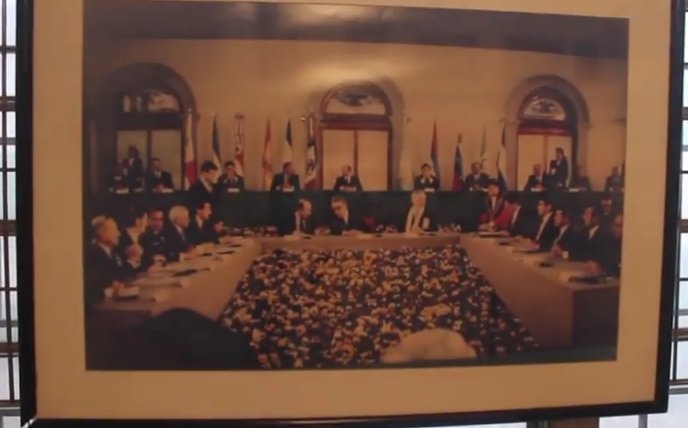The Chapultepec Peace Accords, signed on January 16, 1992, mark a significant milestone in the history of El Salvador. These accords brought an end to the 12-year civil war that had ravaged the country, pitting the government against the Farabundo Martí National Liberation Front (FMLN). Mediated by the United Nations, the peace process culminated in a series of agreements that addressed crucial issues such as human rights, the role of the army, the judiciary, and the political status of the FMLN.
The civil war in El Salvador, which began in 1980, was a complex and brutal conflict. It was characterized by widespread human rights abuses, including massacres, forced disappearances, and torture. The FMLN, a leftist guerrilla group, sought to overthrow the government and establish a more equitable society. The government, backed by the military, responded with a heavy-handed approach, leading to a protracted and bloody conflict.
The negotiation process that led to the Chapultepec Peace Accords was challenging and required the involvement of various stakeholders. The United Nations played a crucial role in facilitating the talks and ensuring that both parties had a platform to voice their concerns and aspirations. The negotiations took place in Mexico City, providing a neutral ground for the discussions.
One of the key outcomes of the accords was the establishment of a comprehensive framework for the protection of human rights in El Salvador. Both the government and the FMLN committed to respecting and upholding the rights of all individuals, regardless of their political affiliation. This was a significant step towards healing the wounds of the war and creating a more inclusive and democratic society.
The Chapultepec Peace Accords also addressed the role of the army in El Salvador. It called for the reduction of the armed forces and the establishment of a new, professional, and apolitical military. This was aimed at ensuring that the military would no longer be used as a tool of repression, but rather as a force for the protection of the country and its citizens.
In addition, the accords sought to reform the judiciary system in El Salvador. The goal was to ensure the independence and impartiality of the judiciary, thus guaranteeing that all individuals would have access to a fair and just legal process. This was crucial for building trust in the rule of law and promoting a culture of accountability and transparency.
Perhaps one of the most significant outcomes of the Chapultepec Peace Accords was the legalization of the FMLN as a political party. This allowed former guerrilla fighters to transition from armed struggle to peaceful political participation. The FMLN went on to become a major political force in El Salvador, participating in subsequent elections and contributing to the country’s democratic development.
The Chapultepec Peace Accords marked the end of a dark chapter in El Salvador’s history. They provided a foundation for reconciliation and paved the way for the country’s transition to peace and democracy. However, it is essential to acknowledge that the process of healing and rebuilding a society torn apart by war is a long and challenging one.
To learn more about the Chapultepec Peace Accords and the civil war in El Salvador, you can refer to the following external references:
1. United Nations: [link](https://www.un.org/en/sections/history/history-peacekeeping/index.html)
2. BBC News: [link](https://www.bbc.com/news/world-latin-america-19686191)
3. The New York Times: [link](https://www.nytimes.com/1992/01/17/world/salvador-accord-ends-12-year-rebel-war.html)
Remember, the Chapultepec Peace Accords were a crucial turning point in El Salvador’s history, bringing an end to a devastating civil war and laying the foundation for a more peaceful and democratic future.

